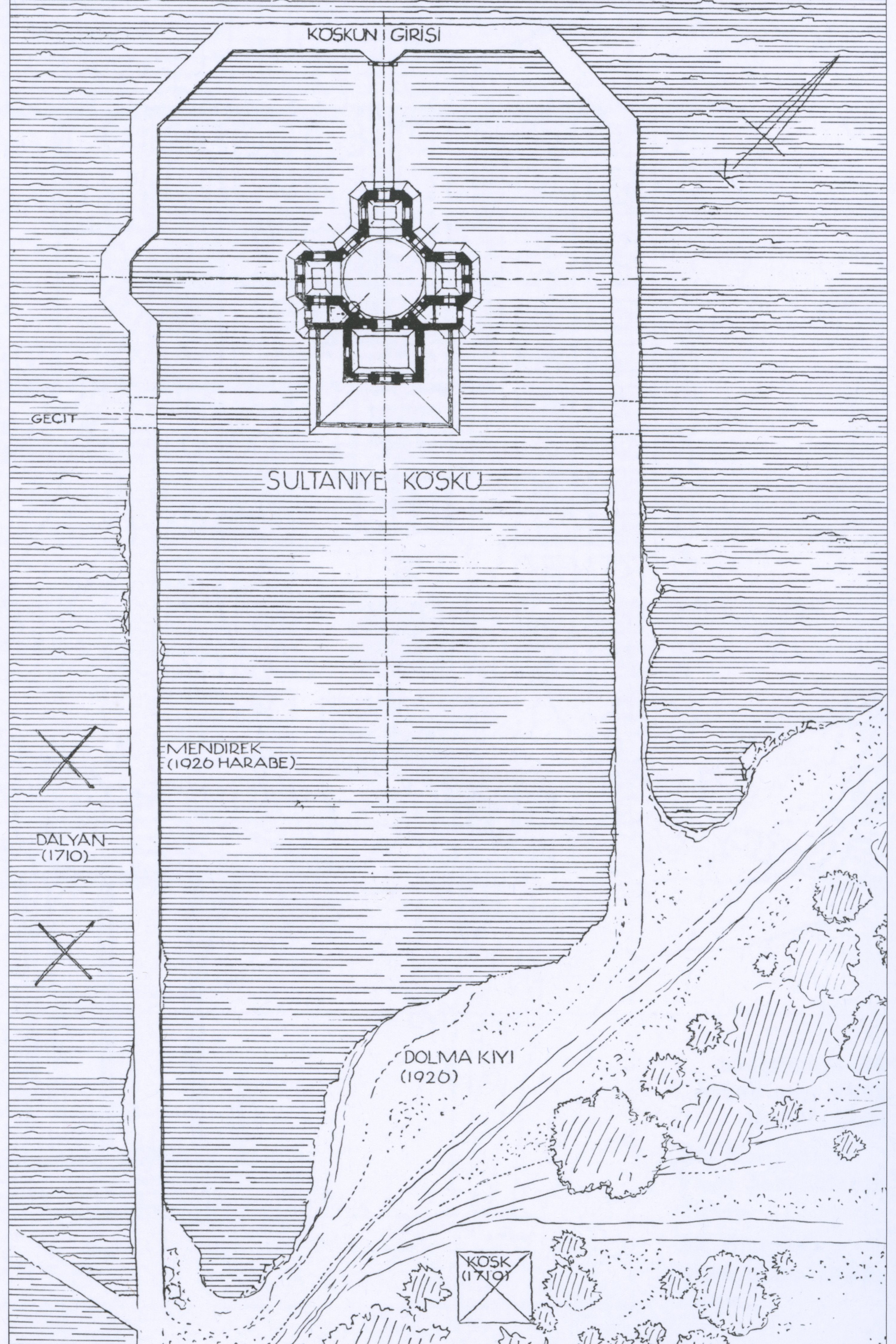© Turkuvaz Haberleşme ve Yayıncılık 2024
The Sultaniye Mansion, the only Ottoman structure built on the sea according to travel books, archive documents and foundation ruins, was remodeled by Turkish architects.

The mansion was the second structure constructed in Bosporus in Istanbul after the Maiden's Tower. Believed to be built during the reign of Ottoman Sultan Bayezid II, the historical residence was controlled by divers in the past. It is thought that the structure could not survive to date due to the effects of earthquakes.
The structure in Beykoz Paşabahçe Bay was mentioned in 17th-century Ottoman travelers Evliya Çelebi's "Seyahatname" ("Books of Travels") and can be seen in the drawings of Swedish painter Cornelius Loos.
The Sultaniye Mansion, which shined out with its tiles and Persian decorations when it was standing, was completely destroyed in the 1700s. After 300 years, only some remains of the structure's foundation could be found in the sea.
Whereas architects created a 3D model of the building, the Sultaniye Mansion is waiting for the day when it will be rebuilt again.
Architect Bayram Çevik, who carries out modeling studies on the historical building, told Anadolu Agency (AA) that there are records that the mansion was personally used by the 10th Ottoman Sultan Suleiman, also known as Suleiman the Magnificent.
Noting that Sultan Suleiman the Magnificent used the place for hunting and resting and also held some council meetings here, Çevik said, "We know from the notes of the French archaeologist Antoine Galland that the Sultaniye Mansion existed in the 1650s. Evliya Çelebi also mentioned the mansion in his 'Seyahatname' at the same time and revealed what a masterpiece it was with its decorations, ornaments and tiles. He called it 'Mansion of Irem,' referring to a Quranic name attributed to a lofty, lost city, region or tribe."
Stating that the Swedish King of the period sent the painter Loos to Istanbul in 1710 in order to get acquainted with the Ottoman architecture, the architect added that Loos painted the Sultaniye Mansion after the Hagia Sophia Grand Mosque and Süleymaniye Mosque. His drawings are among the most reliable architectural source for the remodeling of the mansion today.
Çevik informed that the mansion was also cited in the book titled "Türk Bahçeleri" ("Turkish Gardens") by famous architect Sedad Hakkı Eldem. Reminding that they have remodeled the residence in the light of the architectural data they obtained from Loos' drawings and Eldem's studies, he continued: "One of the sources from which we get inspiration during the remodeling process was the Siyavuş Pasha Mansion. Siyavuş Pasha Mansion was a building constructed in the same period as the Sultaniye Mansion. The two mansions have similar features, but we know from sources that there are more decorations and ornaments in the Sultaniye Mansion."
In the 3D remodel of the mansion, various hexagonal tiles have been used on the facade. While marble pedestals and columns decorate the mansion, wooden details are also included.
According to architect Çevik, the mansion was built in a complex-like structure and there were some other buildings in the Sultaniye Park along with the mansion in the sea. When the sultan came to the Sultaniye mansion, other structures in the park were used by the notables of the palace. However, the architects of the remodeling project do not have enough architectural data about these complementary structures as they have for the mansion. Çevik thus said that they still research them.
Noting that the former Mayor of Beykoz, Muharrem Ergül, brought up this issue in an article, Çevik said that the current Mayor of Beykoz, Murat Aydın, is also working on the reconstruction of the structure.
Pointing out that the Sultaniye Mansion is the only Ottoman architecture in the sea in the Bosporus, Çevik concluded: "The Sultaniye Mansion is the only Ottoman structure in Bosporus after the Maiden's Tower, which has existed for centuries. As it is the only structure built in the middle of the sea after a Byzantine structure, it holds a special place in Ottoman architecture. Therefore, it is vital that this work is revived today in order to transfer the Ottoman heritage to the next generations."
